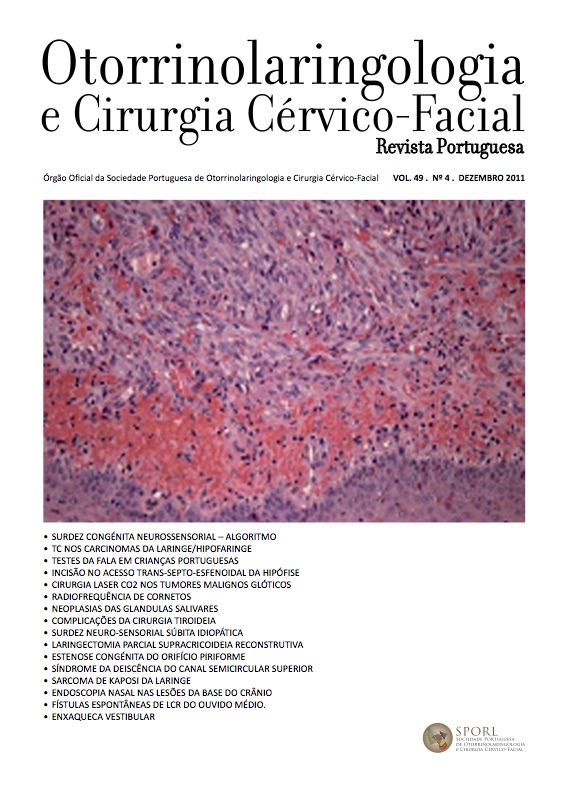Salivary gland neoplasms – IPO FG coimbra experience – last 10 years
DOI:
https://doi.org/10.34631/sporl.195Keywords:
salivary glands, pleomorphic adenoma, epithelial neoplasms, adenoid cystic, carcinomaAbstract
Introduction: The pathology of the salivary glands is essentially inflammatory and neoplastic with very different biological behaviors. Material and methods: A retrospective review of cases of salivary gland surgery between 2005 and 2010 and the cases with histological diagnosis of malignant epithelial salivary gland neoplasm between 2000 and 2010. Results: Between 2005 and 2010, we studied 261 patients, 197 cases of benign tumors and 64 malignant. The most frequent lesions were pleomorphic adenoma as benign lesion and squamous cell carcinoma as malignant lesion; The parotid was the most affected gland. The histological malignant epithelial cases between 2000 and 2010 revealed 55 cases with the most prevalent histological type being the adenoid cystic carcinoma (22%). Conclusions: In this analysis, tumor stage appears to be the most important prognostic factor in malignant epithelial salivary neoplasm. Radiation therapy has an important role as adjunctive therapy. Relapse rates are high in the long term and distant metastases can emerge even with locally controlled disease.
Downloads
References
Meyers EN, Ferris RL. Salivary Gland Disorders. Springer, 2007
McGurk M, Renehan A. Controversies in the management of salivary gland disease. Oxford University Press, 2001
Kokemueller H, Swennen G, Brueggemann N, Brachvogel P et al. Epithelial malignancies of the salivary glands: clinical experience of a single institution—a review. Int J Oral Maxillofac Surg 2004; 33: 423–432.
Jones AV, Craig GT, Speight PM, Franklin PD. The range and demographics of salivary gland tumours diagnosed in a UK population. Oral Oncology 2008; 44, 407– 417
Bonito N, Broco S, Costa M, Silva R et al.. Tumores adenóide císticos das glândulas salivares major – experiência de um serviço de Oncologia. Revista Portuguesa de ORL e Cirurgia Cervico-Facial, 2009; 47-3: 141-144.






